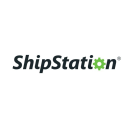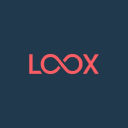How My 2 Year Old Inspired A Business Idea That Made It On Good Morning America
Hello! Who are you and what business did you start?
My name is Amy Leinbach, and I’m the founder of Big Bee, Little Bee. We make innovative goods at home and on the go. I’m the Big Bee and my 6-year-old daughter is the Little Bee.
Most of our catalog is made up of my innovations, like the ScrubBEE Easy-Grip Silicone Scrubber, Build-A-Straw Easy-Clean Travel Straw, and Clean Bee Reusable Quick-Dry Towels. We strongly believe in protecting our environment, so we focus on developing reusable goods that are easy to use and built to last. The ScrubBEE is our top seller. Since the original size ScrubBEE was designed for little kids, most of our customers are parents. But since the launch of the Big ScrubBEE, as well as the straws and towels, our customer base is widened.
At the end of 2020, our products were featured on Good Morning America....

Download the report and join our email newsletter packed with business ideas and money-making opportunities, backed by real-life case studies.

Download the report and join our email newsletter packed with business ideas and money-making opportunities, backed by real-life case studies.

Download the report and join our email newsletter packed with business ideas and money-making opportunities, backed by real-life case studies.

Download the report and join our email newsletter packed with business ideas and money-making opportunities, backed by real-life case studies.

Download the report and join our email newsletter packed with business ideas and money-making opportunities, backed by real-life case studies.

Download the report and join our email newsletter packed with business ideas and money-making opportunities, backed by real-life case studies.

Download the report and join our email newsletter packed with business ideas and money-making opportunities, backed by real-life case studies.

Download the report and join our email newsletter packed with business ideas and money-making opportunities, backed by real-life case studies.

















